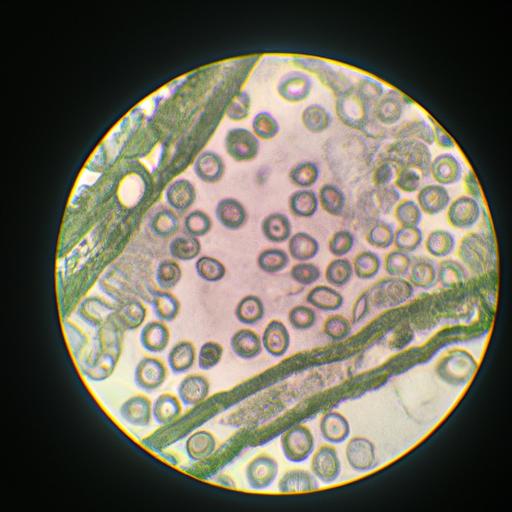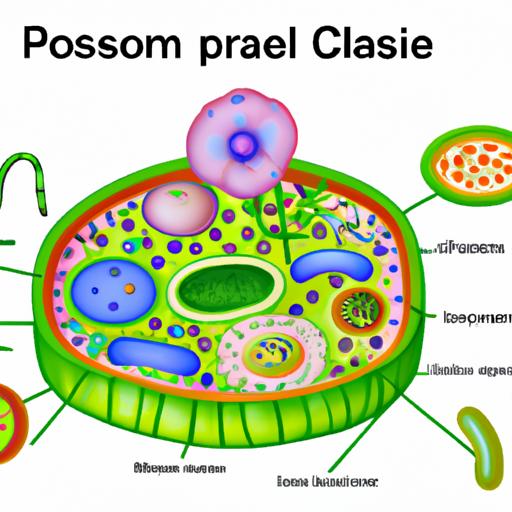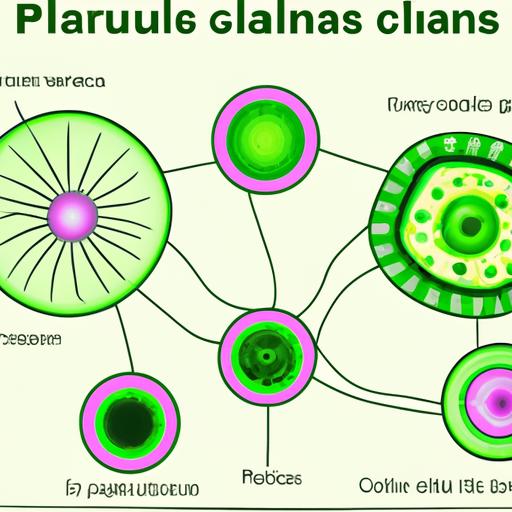How Plants Make Food: Exploring the Fascinating Process of Photosynthesis

Plants, the unsung heroes of our ecosystems, possess an extraordinary ability to create their own food. Have you ever wondered how these green wonders transform sunlight into nourishment, fueling the entire food chain? Let’s embark on a journey to unravel the captivating process of photosynthesis and understand how plants sustain themselves.
Photosynthesis, a fundamental process in nature, allows plants to convert sunlight, carbon dioxide, and water into glucose, their primary source of energy. This remarkable feat takes place within the intricate machinery of the plant’s cells, specifically in the chloroplasts.
Chloroplasts, akin to tiny solar panels, harness the power of sunlight. Chlorophyll, the pigment responsible for the plant’s green hue, plays a pivotal role in absorbing light energy. As sunlight floods the leaves, chlorophyll captures this radiant energy, setting the stage for the mesmerizing dance of photosynthesis.
But how does this dance truly unfold? The process of photosynthesis can be divided into two main stages: the light-dependent reactions and the light-independent reactions, also known as the Calvin cycle.
In the light-dependent reactions, the absorbed light energy is converted into chemical energy. It begins with the transfer of electrons through an intricate electron transport chain, generating adenosine triphosphate (ATP) and nicotinamide adenine dinucleotide phosphate (NADPH) as energy carriers. These vital molecules act as powerhouses, fuelling the subsequent steps of photosynthesis.
As we transition into the light-independent reactions, also known as the Calvin cycle, the stage is set for carbon dioxide fixation and the synthesis of glucose. Here, ATP and NADPH, the products of the light-dependent reactions, are utilized to convert carbon dioxide into organic compounds through a series of intricate chemical reactions. The end result? Glucose, the sweet nectar that fuels the plant’s growth and development.
Plants have perfected the art of photosynthesis over millions of years, but what factors influence their food production? Stay tuned as we delve into the next section to explore the intriguing elements that impact this vital process. Join me as we unravel the secrets behind the scenes, where plants harness the power of nature to create sustenance for themselves and all living beings.
The Process of Photosynthesis
A. Exploring the Key Components of Photosynthesis
Photosynthesis, the intricate process that allows plants to create food, involves several essential components working harmoniously. Let’s dive deeper into these key players and understand their roles in this captivating dance of sustenance.
1. Chloroplasts: Capturing Sunlight’s Magic
At the heart of photosynthesis lies the chloroplast, the cellular organelle responsible for capturing the magic of sunlight. These microscopic powerhouses, abundant in the leaves of green plants, contain a pigment called chlorophyll that plays a crucial role in the absorption of light energy. Together, chloroplasts and chlorophyll form the foundation of this remarkable process.
2. Chlorophyll: The Green Master of Light Absorption
Imagine chlorophyll as nature’s light-absorbing superhero, dressed in vibrant green hues. This remarkable pigment is instrumental in capturing light energy from the sun. It absorbs specific wavelengths of light, primarily red and blue, while reflecting green light, giving plants their characteristic color. Through this selective absorption, chlorophyll sets off a chain of events that initiates the photosynthetic process.
3. Carbon Dioxide: The Essential Ingredient
While sunlight provides the energy, carbon dioxide serves as a vital ingredient for photosynthesis. Plants intake carbon dioxide from the atmosphere through tiny pores called stomata, primarily located on the underside of their leaves. This atmospheric gas acts as the building block for the production of glucose, enabling plants to store energy for growth and survival.
4. Water: The Elixir of Life
Water, the elixir of life, plays a significant role in the overall photosynthetic process. Through a process called transpiration, plants absorb water from the soil through their roots, transporting it to the leaves. Once in the leaves, water is utilized in the conversion of light energy into chemical energy, facilitating the synthesis of glucose. Additionally, water provides structural support to the plant and maintains turgor pressure, allowing it to stand tall and flourish.
With these components working in harmony, plants harness the power of sunlight, carbon dioxide, and water to create the energy-rich molecules that sustain life. As we continue our exploration, let’s uncover the intricacies of the light-dependent and light-independent reactions, unraveling the captivating steps that lead to the production of food within the lush green foliage.
Light-dependent Reactions
The first stage of photosynthesis, known as the light-dependent reactions, is a captivating process that harnesses the power of sunlight to generate chemical energy. Let’s dive deeper into this remarkable stage and explore its intricate mechanisms.
A. Detailed explanation of the first stage of photosynthesis
-
Absorption of light energy by chlorophyll: Chlorophyll, the primary pigment in plants, acts as a light-harvesting molecule. When sunlight strikes the leaves, the chlorophyll molecules in the chloroplasts absorb specific wavelengths of light, particularly in the red and blue regions of the electromagnetic spectrum. This absorption of light energy is the first step towards fueling photosynthesis.
-
Conversion of light energy into chemical energy through the electron transport chain: Once the chlorophyll molecules capture the sunlight, they transfer the energized electrons to a series of protein complexes called the electron transport chain. This chain is located in the thylakoid membrane of the chloroplast. As the electrons pass through the protein complexes, they release energy, which is utilized to pump protons (H+) across the thylakoid membrane.
-
Production of ATP and NADPH as energy carriers: The accumulation of protons in the thylakoid space creates a concentration gradient. As the protons flow back into the stroma through ATP synthase, a remarkable enzyme, they generate adenosine triphosphate (ATP), the energy currency of the cell. Additionally, during the electron transport chain, the energized electrons are captured by the molecule nicotinamide adenine dinucleotide phosphate (NADP+), which is then reduced to form NADPH. Both ATP and NADPH play critical roles in driving the subsequent reactions of photosynthesis.
By the end of the light-dependent reactions, the plant has successfully converted light energy into chemical energy in the form of ATP and NADPH. These energy-rich molecules act as powerful intermediaries, fueling the subsequent stage of photosynthesis, the light-independent reactions. Join me in the next section as we unravel the mysteries of the Calvin cycle, where carbon dioxide is transformed into the building blocks of plant nutrition.
Light-independent Reactions (Calvin Cycle)
As we delve deeper into the enchanting realm of photosynthesis, we come across the captivating light-independent reactions, also known as the Calvin cycle. This second stage of photosynthesis takes place within the chloroplasts, where a series of intricate chemical reactions occur, ultimately leading to the formation of glucose and other essential sugars.
A. Utilization of ATP and NADPH produced in the light-dependent reactions
In this stage, the energy-rich molecules produced during the light-dependent reactions, namely adenosine triphosphate (ATP) and nicotinamide adenine dinucleotide phosphate (NADPH), take center stage. They serve as the driving force behind the Calvin cycle, providing the necessary energy for the subsequent steps.
B. Fixation of carbon dioxide into organic compounds
Next, carbon dioxide (CO2), the atmospheric gas we exhale, plays a vital role in the Calvin cycle. Through a process known as carbon dioxide fixation, CO2 molecules are captured and converted into more complex organic compounds. This transformation occurs with the help of an enzyme called RuBisCO (Ribulose-1,5-bisphosphate carboxylase/oxygenase), which catalyzes the reaction between CO2 and a five-carbon sugar called RuBP (Ribulose-1,5-bisphosphate).
C. Formation of glucose and other sugars as primary products
The final step of the Calvin cycle involves the synthesis of glucose and other essential sugars. The energy from ATP and the high-energy electrons from NADPH are utilized to convert the resulting organic compounds into more stable forms, including glucose. These sugars serve as the primary fuel for the plant’s growth, development, and various metabolic processes.
The intricate dance of the light-independent reactions, driven by the energy harnessed from sunlight, culminates in the production of glucose and other vital sugars. These carbohydrates not only sustain the plant but also serve as a foundation for the entire food web, providing nourishment for countless organisms.
Join me in the next section as we explore the factors that impact the efficiency of photosynthesis, shedding light on the delicate balance that governs a plant’s ability to create its own sustenance.
Factors Affecting Plant Food Production
A. Understanding the Influential Factors
When it comes to the efficient production of plant food, several factors come into play, intricately influencing the process of photosynthesis. Let’s delve into the discussion of these factors and understand their impact on the overall efficiency of this vital process.
1. Light Intensity and Duration
Light acts as the driving force behind photosynthesis, serving as the energy source that fuels the entire process. The intensity and duration of light exposure significantly affect a plant’s ability to produce food. Adequate light intensity ensures that chlorophyll can absorb sufficient energy for photosynthesis. Insufficient light can hinder the process, while excessive light can lead to damage.
2. Availability of Carbon Dioxide
Carbon dioxide, the essential ingredient for photosynthesis, plays a crucial role in determining the rate of food production in plants. Insufficient levels of carbon dioxide can limit the efficiency of photosynthesis, as the plant’s ability to fix carbon and produce glucose becomes compromised. Adequate ventilation and access to a sufficient supply of carbon dioxide are necessary for optimal plant growth.
3. Temperature and its Impact on Enzyme Activity
Temperature acts as a regulator for enzyme activity, which directly influences the rate of photosynthesis. Enzymes, the biological catalysts that drive chemical reactions, have an optimal temperature range for their function. Extremes in temperature can denature enzymes, inhibiting their activity and hindering photosynthesis. Balancing temperature is crucial to ensure optimal enzyme function and, consequently, efficient food production.
4. Water Availability and its Role in Maintaining Turgor Pressure
Water is a vital resource for plants, and its availability directly affects photosynthesis. Sufficient water uptake is essential to maintain turgor pressure, which keeps plant cells firm and upright. Inadequate water availability can lead to wilting, reducing the surface area for photosynthesis and impeding the movement of nutrients. Proper irrigation and hydration are necessary to support optimal photosynthesis and ensure robust plant food production.
As we explore the factors influencing plant food production, it becomes evident that a delicate balance is necessary to achieve optimal photosynthesis efficiency. From the quality and duration of light exposure to the availability of carbon dioxide, temperature regulation, and water supply, each factor plays a significant role in sustaining and enhancing the plant’s ability to create nourishment.
In the subsequent section, we will conclude our exploration of how plants make food, summarizing the key points discussed and emphasizing the importance of understanding this remarkable process. Stay tuned as we wrap up our journey through the captivating world of photosynthesis.
Conclusion
In conclusion, understanding how plants make food through the process of photosynthesis unveils the marvels of nature’s ingenuity. From the captivating dance of light-dependent reactions to the intricate synthesis of glucose in the light-independent reactions, plants showcase their remarkable ability to sustain themselves and nourish the world around them.
Photosynthesis is not merely a biological process; it is a symphony orchestrated by chloroplasts, chlorophyll, carbon dioxide, and water. Every element plays a crucial role in this symphony of life, ensuring the production of glucose, the lifeblood of plants.
As we explored the factors influencing plant food production, we discovered that light intensity, carbon dioxide availability, temperature, and water accessibility are pivotal in optimizing photosynthesis efficiency. By nurturing these elements, we can create an environment that fosters robust plant growth and ensures bountiful food production.
Moreover, comprehending the awe-inspiring process of photosynthesis grants us a deeper appreciation for the interconnectedness of all living organisms. It highlights the vital role that plants play not only in sustaining themselves but also in providing sustenance for the entire food chain, including humans.
So, next time you witness the greenery around you, take a moment to marvel at the incredible process happening within each leaf. Remember that plants are not just stationary beings; they are master chefs, whipping up the most essential ingredient for life itself.
In the grand tapestry of nature, plants stand as living testimonials to the wonders of photosynthesis. They remind us that even the simplest of organisms possess the power to create and nourish, weaving together the intricate threads of life.
Now, armed with the knowledge of how plants make food, let us cherish and protect these botanical marvels, for they hold the key to a thriving and sustainable world.
Conclusion: So above is the How Plants Make Food: Exploring the Fascinating Process of Photosynthesis article. Hopefully with this article you can help you in life, always follow and read our good articles on the website: plants.123didulich.com



